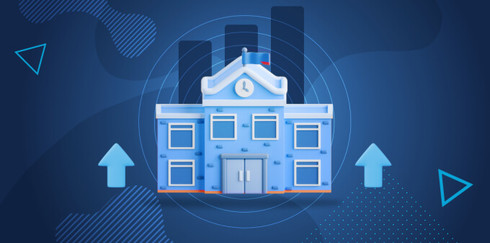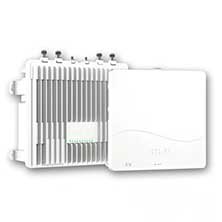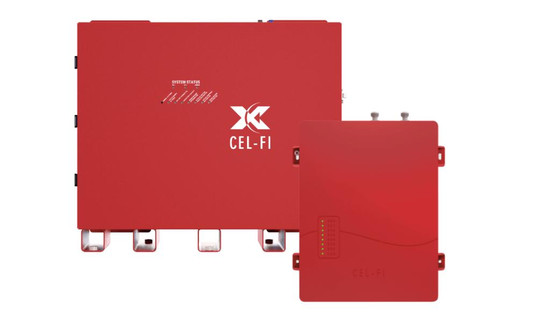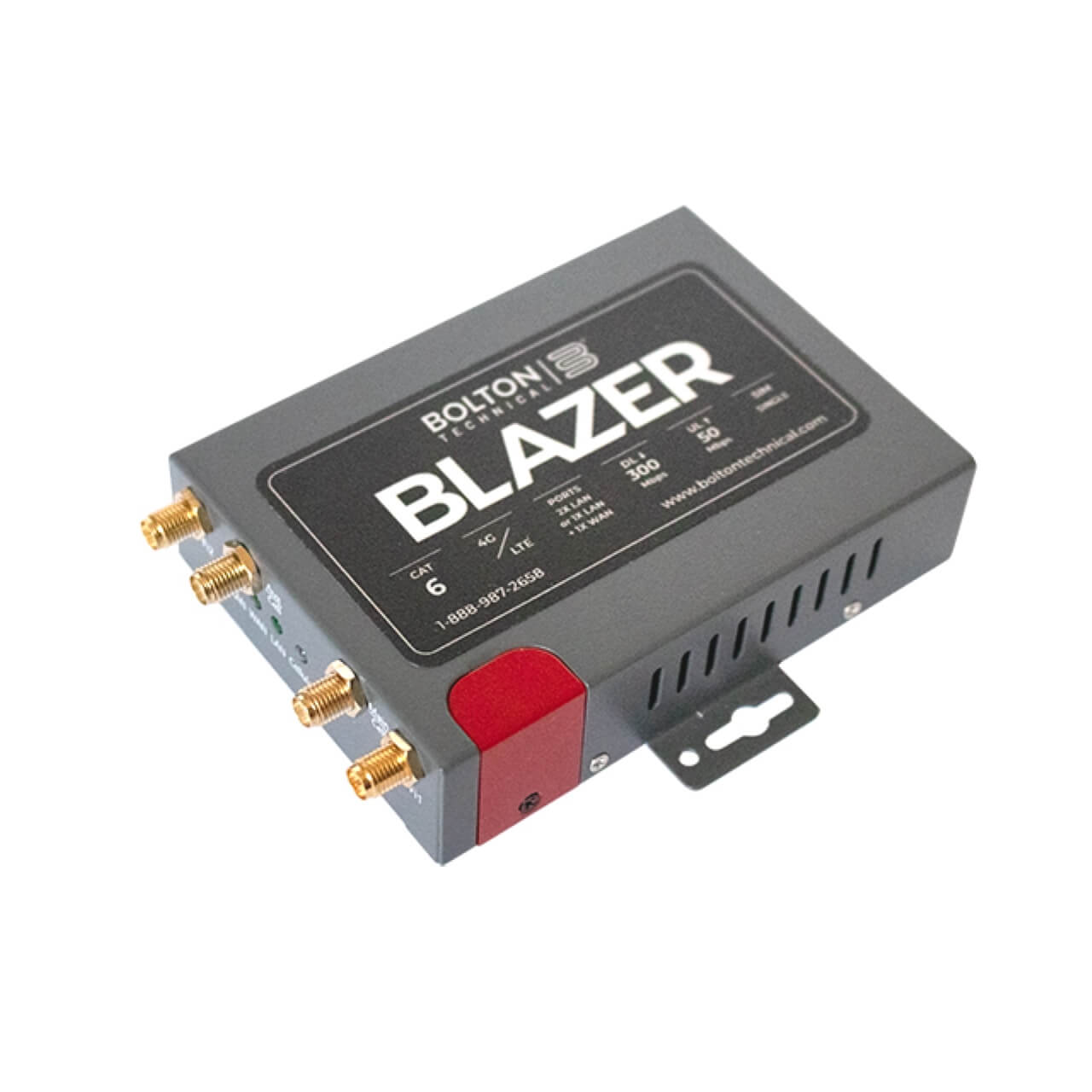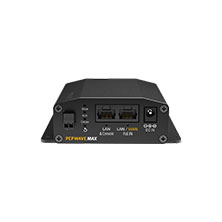Government Grants for Better Cell Service in Schools: A 2023 Guide
In recent years, poor cell reception inside schools has become a great concern. Not only does it hinder teaching and learning, but it poses a great safety risk. Reliable cellular reception is crucial for effective communication and academic success.
Communication technologies, like cell phone signal boosters, can improve cellular coverage throughout schools for teachers, students, parents, and staff. In many cases, budget is a concern. Luckily, there are funding programs available that can pay for equipment and services that’ll make schools safer.
Take advantage of our system design and installation services. Learn more or call us for a free consultation: 1-800-969-8189.
How to Improve Cell Reception in Schools
Most schools have terrible cell signals inside due to building materials. Metal, concrete, brick, energy-efficient windows, and the like block and degrade cellular signals. Outside cell reception might be strong, but once you step through the doors, cellular devices are no better than a paperweight. This makes it hard to call or text first responders, parents, and staff within the facility. Distributed Antenna Systems (DAS) can definitely eliminate cellular signal woes inside educational institutions.
Passive DAS a.k.a Cell Phone Signal Boosters
Cell phone signal boosters help promote safety and security by ensuring strong cellular connectivity wherever needed. Anybody in the building can effectively reach first responders at any given moment. In addition, teachers and students can take advantage of the opportunities mobile technology brings to the classroom.
Cellular boosters take your existing outside cell signal, even if weak, and deliver it even stronger inside. Building materials will no longer be an issue. They can enhance cell service for all carriers, devices, and networks.
To cover all priority areas with strong cell signals at an affordable price, cell phone boosters use a Passive Distributed Antenna System (DAS). All antennas are connected to an amplifier via coaxial cables. It’s easy to integrate into schools and doesn’t require carrier approval.
Our professional installers will survey your school and design a custom system based on your unique needs.
With the right system design, a cell phone signal booster can cover nearly any sized school. Here is our top education signal booster solution:
WilsonPro 4300
The WilsonPro 4300 is our most powerful passive DAS system. It’s equipped with four independent amplifiers in one casing. Under optimal conditions, a single unit can cover up to 100,000 sq ft with reliable 4G and 5G cellular signals.
Featuring industries-first three outdoor antenna ports, the WilsonPro 4300 can target multiple cellular towers to maximize performance. With high uplink power, antennas can reach distance cell towers. It also has four independent indoor antenna ports, but can support up to 20. This allows for wider in-building signal coverage and decreases signal loss due to fewer cable runs. And with XDR technology, you are guaranteed constant signal uptime without experiencing system shutdowns due to signal overload.
Unit is available in either rack-mount or wall-mount configurations.
Active DAS
A Hybrid DAS is the “just-right” cellular signal solution for many schools. It works very similar to an Active DAS. It makes use of fiber optic or ethernet cables, allowing for long cable runs. However, it also uses coaxial cables to distribute cellular signals to all indoor antennas. Performance is way better than a signal booster and it’s less expensive than an Active DAS. Featuring a relatively quick deployment, your school can be covered with dependable cellular reception in no time.
Our top Hybrid DAS manufacturers are Cel-Fi and Zinwave.
Nextivity QUATRA 4000c
The QUATRA 4000c is the most advanced Hybrid DAS cellular booster available for schools. It’s a scalable, all-digital system capable of covering up to 200,000 sq ft. With up to +100 dB of gain, it’s more than +30 dB or up to 1000x more powerful than other cell boosters for schools. Its innovative network/coverage unit setup ensures maximum coverage. School will be covered with superior 4G, LTE, and 5G cellular signals from up to four carriers for all cellular devices.
Featuring CBRS private network capabilities, schools can expand their wireless connectivity strategy to include a private network alongside public cellular coverage.
Through the Cel-Fi WAVE app, you can monitor and manage the QUATRA 4000c.
With Zinwave, we can turn any WilsonPro system into a Hybrid DAS. Call us at 1-800-420-3211 for a free consultation with our signal experts.
Public Safety DAS
A Public Safety DAS can be active, passive, or hybrid. Its purpose is to improve communication for first responders inside schools during emergencies. They specifically work with FirstNet and LMR frequencies, which other cellular boosters do not support. They’re also equipped with backup batteries. Even during times of congestion or power outages, emergency personnel have reliable connectivity.
Cel-Fi by Nextivity SHIELD EXTEND
The Nextivity SHIELD EXTEND is a Public Safety Hybrid DAS with a maximum coverage of 200,000 sq ft. It’s designed to provide consistent coverage in the most challenging structures and to guarantee compliance with the most recent fire codes. It consists of one Network Unit (NU) and up to 6 Coverage Units (CUs). With gain up to 100 dB, it ensures greater performance than the competition. The Class A version offers 56 individually configurable channels, and the Class B version offers 28 channels with 100Khz and 150kHz bandwidth options.
We understand that cost is a concern for many schools. Because cellular boosters, Active DAS and Hybrid DAS expedite communication with emergency personnel, they qualify for many school safety grants.
Available School Safety Funding Programs
The safety and security of students and staff are of utmost importance to educational institutions. Establishing and maintaining reliable cellular connectivity within school premises is crucial for effective emergency preparedness and response. Here are some grants that cover the cost of cellular signal amplification units:
Student, Teacher, and Officers Preventing (STOP) School Violence Program
In 2018, the STOP School Violence Act was signed to prevent future violence in schools. It offers annual grants to provide schools with evidence-based programs and technologies needed to recognize, respond quickly to, and prevent acts of violence. The STOP School Violence Program is one of them.
Funding can be used to:
- Train school personnel and educate students on the prevention of violence.
- Train school officials on mental health crisis.
- Deploy technology solutions that expedite communication during emergencies.
- Establish school threat assessment and intervention teams.
- Support other measures identified by the National Institute of Justice's Comprehensive School Safety Initiative that enhance safety and prevent violence.
You can request funding for one or more of the stated purposes.
The following are eligible to apply:
- State governments
- City or township governments
- County governments
- Units of local governments
- Federally recognized Native American tribal governments
- Nonprofits having a 501(c)(3) status with the IRS, other than institutions of higher education
- Nonprofits that do not have a 501(c)(3) status with the IRS, other than institutions of higher education
- Private institutions of higher education
- Independent school districts
- Public and state-controlled institutions of higher education
Applications must be submitted online. Instructions on how to apply can be found here.
School Violence Prevention Program (SVPP)
The STOP Act allowed the Community Oriented Policing Services (COPS) Office to provide funding to improve security at schools and school grounds. They offer the SVPP. It aims to make schools safer through the implementation of evidence-based school safety programs and technology. In 2023, up to $73 million in funding is available. Each award is good for three years with a maximum of $500,000 per award.
Funding can be used for:
- Coordination with law enforcement.
- Training for local law enforcement officers to prevent student violence against others and self.
- Metal detectors, locks, lighting, and other deterrent measures.
- Technology for expedited notification of local law enforcement during an emergency.
- Any other measure that the COPS Office determines may provide a significant improvement in security.
You can request funding for one or more of the stated purposes.
The following are eligible to apply:
- Local law enforcement agencies
- State law enforcement agencies
- Units of local government (e.g. counties, cities, school districts)
- Federally recognized Indian tribes and their public agencies
- Public government agencies
Instructions on how to apply can be found here.
Higher Education Emergency Relief Fund (HEERF)
The CARES (Coronavirus Aid, Relief, and Economic Security) Act was passed in 2020 to aid people affected by the COVID-19 pandemic. Billions of dollars were alluded to the Elementary and Secondary School Education Relief Fund (HEERF), which is broken up into three parts.
| Fund | Month/Year Passed | Deadline to Obligate Funds | Deadline to Liquidate Funds |
|
|
|
|
*To obligate funds refers to committing to spend the funds. To liquidate funds refers to actually spending the funds by the deadline.
The purpose of these funds is to address and mitigate the effects of the COVID-19 pandemic, including its impact on the social, emotional, mental health, and academic needs of students. They can also be used to enhance communication reliability and response efforts, which is where cellular boosters come into play.
The deadline to apply for these funds has already passed. However, if your school district was approved for the ESSER II or III, you still have time to obligate funds towards Passive or Active DAS. With fast-approaching deadlines, assessing your cellular signal needs is of the essence. We can help draw up an estimate for your submission.
Emergency Connectivity Fund (ECF)
While the ECF does not pertain to mobile communication, it’s worth mentioning. Cellular connectivity is important in school, but so is connecting to the classroom from home.
The ECF, funded by the American Rescue Plan Act of 2021, aims to help schools and libraries close the homework gap for students who lack access to connected devices and internet services needed for remote learning. It’ll provide funding for the reasonable cost of:
- WiFi hotspots
- Modems (including air cards)
- Routers
- Devices that combine a modem and router
- Connected devices (laptops and tablet computers)
- Broadband services that provide a fixed or mobile internet connection for off-campus use
The ECF expired on May 11, 2023. Though, funding is available for purchases of eligible equipment and services made by June 30, 2024, the sunset date.
If you're looking for quality connectivity devices to provide students, teachers, and library patrons with, here are our recommendations:
Bolton Blazer
- Ideal for homes and offices
- Compact cellular router
- CAT 6 with up to 300 Mbps download speeds
- Easy installation
The Bolton Blazer is a compact but powerful cellular router that enables reliable internet connectivity for students, teachers, and staff. It offers high-speed WiFi connectivity using the 4G LTE network. Equipped with a CAT 6 modem, the Blazer offers downlink speeds of 300 Mbps and uplink speeds of 50 Mbps. It’s a true game changer, especially for those who don’t have access to traditional broadband internet.
Peplink BR1 Mini
- Ideal for homes and offices
- Compact cellular router
- CAT 4 with up to 150 Mbps download speeds
- Easy installation
The Peplink Max BR1 Mini is another popular cellular router. It’ll create an always-on hotspot for multiple devices to connect back to the classroom. Cat 4, it offers max download speeds of up to 150 Mbps. Students can learn, and teachers can teach hassle-free from home.
Improve Cell Reception in Schools Today!
The importance of safe and secure school campuses cannot be overstated. By leveraging funding opportunities, educational institutions can enhance communication and emergency response efforts through the implementation of cellular signal boosters.
Presenting compelling data on existing connectivity challenges is essential to secure grants. By taking this proactive step, schools can pave the way for a safer and more secure learning environment.
Our signal experts will analyze your signal situation, design a custom solution for your needs, and provide estimated cost. Call us at 1-800-420-3211 for a free consultation.
Interested in Learning More? Check Out Our Cellular Info Hub / WiFi Info Hub

